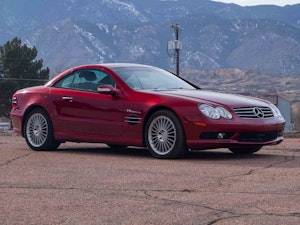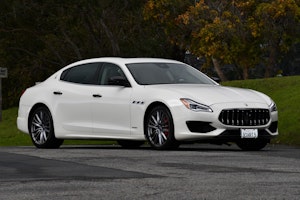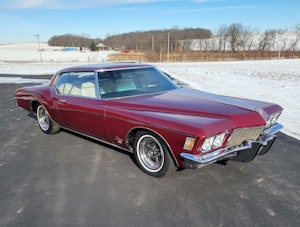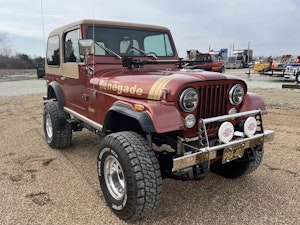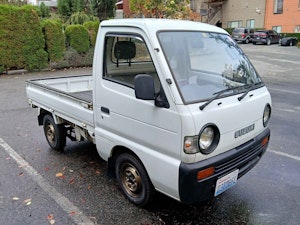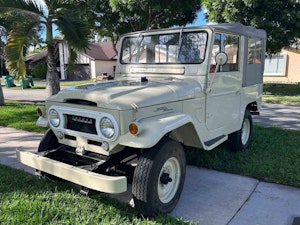Media | Articles
25 cars lagging behind the collector market for spring 2020
Our latest Hagerty Vehicle Rating has quite a few car models returning to the Bottom 25, along with a couple of noteworthy additions. Each car’s reasons for being on the list can vary and, as usual, we warn that a car’s place on the list isn’t a dig at its worth.
The Hagerty Vehicle Rating takes auction and private sales results, insurance quoting activity, and the number of new policies purchased into consideration to sort hundreds of car models and compare them to the collector car market as a whole. Our valuation team then assigns each car a score from 1–100, with a 50 denoting a model that’s perfectly following the overall market trend. Popular cars that are gaining interest and value will score higher, while those with flagging interest or sale prices will score lower. A vehicle’s position on the list isn’t always a sign of future collectability; it’s more of a pulse check on the current market.
American cars from the 1950s and ’60s make up the bulk of the models, with appearances from Ferrari, Aston Martin, and a couple of British roadsters punctuating the list. Plenty of these models are making return appearances, like the 1985–89 Ferrari 328 GTB/GTS, which was on our Bottom 25 list back in 2017. As we’ve noted in previous years, there weren’t any pickups or SUVs among the Bottom 25, as their utility and relative affordability continue to drive their collectibility.
20171212134627)
New to the list is the 2008–present Dodge Challenger. These are great muscle cars, and Dodge has done well to keep them fresh. Its place on the list is largely due to Dodge’s success in pumping out new iterations that keep buyers coming back for more. For starters, few cars could match the hype and anticipation of the limited-production SRT Demon. Brilliant marketing, stellar dragstrip performance, and a great heritage name all combined to make Demons a hot commodity. Soon they were trading hands at more than double their $85,000 MSRP.
Marketplace
Buy and sell classics with confidence
Still, 3300 units isn’t terribly rare in the realm of collector cars, and a drag-focused straight-line machine has a smaller buyer pool compared to a carbon-fiber status symbol like a supercar. Dodge also launched the Hellcat Redeye, with nearly as much power as the Demon in a much more street-friendly package. It wasn’t long before buyers decided that the incredible premiums weren’t worth it, and prices dropped considerably. As valuation specialist Greg Ingold puts it, “Who wants to pay $130,000 for 840 horsepower when you can get just shy of 800 horsepower for a significant discount?” Even with the lowered prices, Demons still command more now than when new—which is noteworthy for a modern muscle car—yet the Demon’s drop in price was a big part of the Challenger winding up near the bottom of the HVR rankings.
At the very bottom of the HVR list, with a rating of 8, is the 1989–91 Chrysler TC by Maserati. Like the Cadillac Allante, the TC is a front-wheel-drive, two-door, two-seat convertible with an Italian-built body. The difference is that the styling of Cadillac’s Pininfarina-built Allante set it apart from the rest of the Cadillac lineup; the TC, which was fully assembled in Italy, looked every bit like a truncated LeBaron. The fact that the TC only came with a meager turbo four-cylinder at launch didn’t help sell its premium status, either. After the excitement over a new model spurred initial sales, interest waned. Even after Chrysler made a 3.0-liter Mitsubishi V-6 engine the standard powerplant, owners wouldn’t line up to buy the expensive drop-top. It’s mid-$30,000 price tag—nearly $70,000 today—placed it above a contemporary BMW 325i convertible and other more powerful sporty cars. In total, only 7300 TCs were built over its three-year run.
Despite its low production numbers, the TC’s ho-hum styling and uninspired powertrain have kept it from being a strong player in the collector car market. With prices slumping and very low quoting activity, our valuation experts were not shocked by its bottom-of-the-barrel position on this list.

Buick’s entrant in the two-seat luxury market, the Reatta, faces a similar fate as the TC and, with a rating of 12, isn’t far from the bottom of the list. While they have some hardcore fans dedicated to keeping them on the road, even the Reatta’s unique looks, which have aged surprisingly well, haven’t gained it a widespread following among collectors.
Other notable cars in the Bottom 25 are pavement-pounding muscle cars including the 1968–70 Plymouth Road Runner, 1968–72 Buick GSX, and 1968–72 Olds 4-4-2. As usual, we expect that high prices for these well-equipped muscle cars are discouraging potential buyers, who instead are opting for the same looks in the garden-variety Satellite, Skylark, and Cutlass—if they’re not moving to newer models entirely.
As always, we remind you to not be discouraged if one of your cars is on this list. There’s always something new, or old, that drives the market one way or another and the tide can change. Buy what you like, drive what you love, and sell the rest for gas money.
